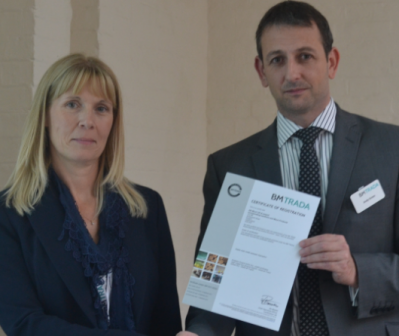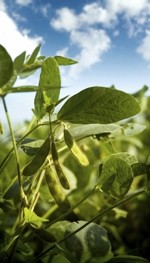Soy story

You know how it goes, last year's must-have is this year's 'so last season'. Get an iPad and suddenly everyone around you is strolling about with an iPad 2.
It seems soy has traced a similar trajectory. According to a report issued by Mintel in April, the once must-have superfood is finding it tough, with sales of soy-based food and drink products falling by 16% between 2008 and 2010. Further short term declines are expected.
Matters were not helped by the hit firms hoping to make health claims for products containing soy took from the European Food Safety Authority (EFSA) in October, when it rejected evidence for weight management, cholesterol control and antioxidant health.
Which makes being the md of a major soy ingredients firm a little challenging. Still, Shaul Shelach is remarkably sanguine.
That may be because he has seen it all before, having served the food industry for almost a quarter of a century, working only the past four years at Israel's Solbar.
For seven years before that, he handled confectionery and baked goods for the country's Elite company, which is part of the Strauss Group, leading its chocolate brand to a significant market share in Israel. This marked his return to Strauss, having spent three years at Unilever after it bought a 51% share in Strauss's ice cream division, his realm for three years before that.
"I built new products, businesses and brands and gained a lot of experience and knowledge and at Elite I was involved in production, processing, marketing and development," he says. "It gave me a lot that is relevant to what we do at Solbar." He's now selling into a similar tier of the supply chain to the one he used to occupy.
Pre-Strauss, his early career as an industrial engineer coordinating plant design and IT projects for seven years while studying for an MBA in marketing, also prepared him for tricky assignments.
Which brings us back to current trading conditions. From Solbar's headquarters in Ashdod, he must grow its presence in more than 40 different countries in continents from Europe and North America to Asia. He seems to revel in the strategic challenge of it all. "The best part of my role is working very closely on a structured strategy."
This strategy builds on three pillars: soy protein isolates; applications such as snack bars and beverages; and the core markets of China, the US and Western Europe.
Such strategic thinking requires a lot of inspiration and Shelach is sure about the source of his. "It's always about people, and a variety is crucial, including customers, technical and marketing managers. In all these you can find answers to any question. It's finding the right question that's often the real problem."
Pinpointing top trends is also vital, he says. "The major trends in the EU soy market are functional soy drinks; weight management and there's evidence for certain types of nutrition bars a big US market. You can see growth there in Europe as well."
Breakfast solutions also offer potential for soy protein. "More and more people have a need for a convenient and nutritional breakfast and any product that will be part of that solution will be successful. Today, a lot of product contains fillers [which add bulk and weight]. These are mainly based on carbs and there's a trend to change cereal ranges to include more protein."
Elsewhere, Solbar is looking into supporting the development of soy-based products with added health benefits. "We are running two projects that are exploring techniques to deliver health complements in soy protein products."
The company has just launched Bontex Hexane-Free a powdered soy protein for use in meat replacement products that is produced using more natural extrusion technology for EU and US customers.
On health claims, Shelach admits the EU approvals or more appropriately, the rejections process has raised challenges. However, he points to the fact that EFSA is reviewing its verdict and believes the only way is up now. "For me the nutritional health claims for soy are clear."
He says he welcomes competition from other soy ingredients manufacturers. "Although they are competititors, I highly appreciate them in a lot of things. Many are investing and engaging in a lot of activity."
Solbar announced the acquisition of the Green Planet Farms US soy protein isolate plant in Nebraska for $7.75M in September, which offers automating and drying technology and promises huge production benefits. "We are also running a summer project to increase extruded production in China." The firm opened another extruded production line there just last month.
Solbar will keep chasing growth via acquisition, as well as organic sales, adds Shelach. However, for the next few months at least it's business as usual and there are no other acquisitions on the horizon.
He also argues that soy milk and protein offer sustainable alternatives to animal-based milk and meat products. "Soy has a lot to do with the environment and this should be taken into consideration."
However, he adds: "A big concern is: will agriculture and industry catch up with growing demand? This has to do with people's need for basic food everywhere, but it should be connected to the environment as an issue that government and other organisations should emphasise.
"This is no small issue. It's very serious. When you look at the news you see growing demand and supply issues. When will we start to see a significant gap? I don't think it will be in the near future, but it should be taken care of now." He estimates the current soy supply shortfall compared with demand to be 13%.
In connection with this, the fluctuating soy price on international markets needs to be managed better, he says. "At the end of the day, the main driver is speculation. This is multiplied and supported by growing demand, but how can that justify a 50% increase in the past six months? It's clear that is to do with speculation."
However, he believes the price will soon peak as speculators shift to more attractive alternatives. "I think it will go down, but when and to what price, no one knows."
One thing he is sure about, though, is that soy's popularity can be revived, potentially by combining it with other products and collaborations with other companies. Like the iPad, its function and reputation will persist through innovation and reinvention. FIHN
RESEARCH UPDATE: NEW IDEAS UNDER THE MICROSCOPE
FUNCTIONAL FOODS REGULATION
Regulation of human study of health foods and other functional foods (eg for structure-function analyses and health claims) in the US, Japan and the UK are discussed along with systems in Korea for regulating health-related functional foods, drugs, cosmetics and biotechnological research. Individual aspects considered include: need for study approval by an institutional review board or research ethics committee in US, Japan, UK and Korea; types of regulatory systems used in the different countries; and the use of foreign guidelines as a foundation for improving the regulation of human studies on functional foods in Korea.
Source: Joohee Kim, Ji Yeon Kim, Hye Suk Won, Hye Jin Kwon, Hye Young Kwon, Hye In Jeong; Oran Kwon, Dept. of Food & Nutritional Science, Ewha Womans University, Seoul, Korea (Korean Journal of Nutrition 43 (6) 653660)
GREEN TEA POLYPHENOLS
Dietary constituents including polyphenols and carotenoids contribute to endogenous photoprotection and modulate skin characteristics related to structure and function of the tissue. Animal and in-vitro studies indicate green tea polyphenols affect skin properties. In a 12-wk, double-blind, placebo-controlled study, 60 female volunteers were randomiswed to an intervention or control group. Participants drank either a beverage with green tea polyphenols providing 1,402mg total catechins/d or a control beverage.
Skin photoprotection, structure, and function were measured at baseline (wk 0), wk 6, and wk 12. After exposing the skin areas to 1.25 minimal erythemal dose of radiation from a solar simulator, UV-induced erythema decreased significantly in the intervention group by 16 and 25% after wk 6 and 12, respectively. Skin structural characteristics that were positively affected included elasticity, roughness, scaling, density, and water homeostasis.
Intake of the green tea polyphenol beverage for 12 wk raised blood flow and oxygen delivery to the skin. In a separate, randomised, double-blind, single-dose (0.5, 1.0, and 2.0g) study of green tea polyphenols, blood flow was maximised at 30min after ingestion. Overall, green tea polyphenols delivered in drinks were shown to protect skin against harmful UV radiation and helped improve overall skin quality of women.
Source: Heinrich, U, Moore, CE, Spirt, S de, Tronnier, H, Stahl, W; Nutrition and Food Sciences, Texas Woman's University, Houston, Texas (Journal of Nutrition 141 (6) 12021208)
COCONUT WATER
Aspects of coconut water are considered including: its nutrient composition; its short shelf-life; a microfiltration technique with potential for enhancing the shelf-life of coconut water; commercial interest by major soft drinks companies; potential use as a sports drink; properties of coconut water suitable for drinking; increased demand for coconut water in Kochi City, India; and energy drink market trends.
Source: Magda, R. R. (Drink Technology & Marketing 15 (1) 1418)
BAMBANGEN FRUIT
A dried high fibre product from bambangan (Mangifera (M) pajang Kort) fruit pulp was prepared and evaluated for proximate composition, functional properties, and soluble and insoluble dietary fibre composition. M pajang fibrous (MPF) consisted of 4.7% moisture, 0.8% fat, 4% protein, and 30mg total polyphenol/g of dry sample, and 9, 79 and 88% soluble, insoluble and total dietary fibre, respectively.
Water and oil holding capacity, swelling, and solubility were found to be 9g/g dry sample, 4g/g dry sample, 16ml/g dry sample, and 11%, respectively. The glucose dialysis retardation index of MPF was about double that of cellulose fibre.
Soluble dietary fibre contained mannose, arabinose, glucose, rhamnose, erythrose, galactose, xylose, and fucose at 1.51, 0.72, 0.39, 0.16, 0.14, 0.05, 0.04, and 0.01%, respectively, with 5.8% uronic acid, while insoluble dietary fibre was composed of arabinose (18.47%), glucose (4.46%), mannose (3.15%), rhamnose (1.65%), galactose (1.20%), xylose (0.99%), and fucose (0.26%) with 15.5% uronic acid and 33.1% klason lignin. These traits indicate that MPF is a rich source of dietary fibre and has physicochemical properties making it suitable as an added ingredient in various food products and/or dietetic, low-cal high-fibre foods to enhance their nutraceutical properties.
Source: Al-Sheraji, S H, Amin Ismail, Mohd Yazid Manap, Shuhaimi Mustafa, Rokiah Mohd Yusof, Fouad Abdulrahman Hassan; Dept. of Nutrition & Dietetics, Faculty of Medical & Health Sciences, University Putra Malaysia (Journal of Agricultural and Food Chemistry 59 (8) 39803985)















